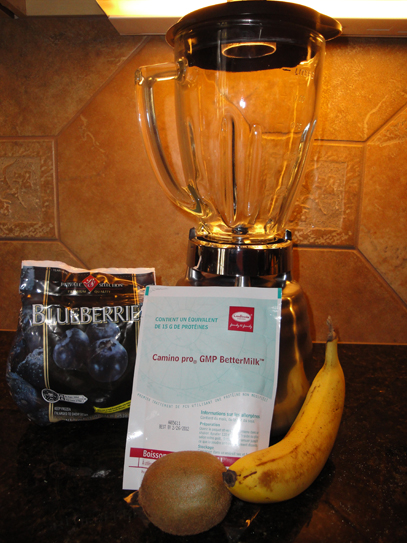Like most women, I am no stranger to counting calories and limiting the amount I eat each day in order to lose or maintain weight goals. When returning to the low-protein PKU diet in January 2013, consuming a higher amount of calories was definitely a major concern of mine. In fact, I would say that calories – more so than taste – was a key decision factor for when selecting a formula. Let’s face it, when you’re drinking formula three and four times a day, those calories can rack-up fast!
But all that had to change after finding out I was pregnant.
Eating right during pregnancy
Before discussing calories and maternal PKU, here’s a quick look at what the National Institutes of Health recommends for progressively increasing calories throughout the course of a pregnancy:
- 1st trimester: 1,800 calories/day
- 2nd trimester: 2,200 calories/day
- 3rd trimester: 2,400 calories/day
I suspect that because of the old adage, “when you’re pregnant, you’re eating for two,” most pregnant women do not have any trouble meeting those calorie goals. But if you have PKU, and are challenged with a low-phe tolerance, meeting those goals can seem next to impossible. Yet, doing so is just as critical as making sure you limit your protein intake.
Why you must count both phe and calories for maternal PKU
If you do not consume enough calories, your body can enter what’s known as a catabolic state. It’s a big concern for those in the bodybuilding industry because without adequate post-workout nutrition (a.k.a. a protein shake), bodybuilders are at risk for excessive breakdown of muscle mass and could thereby end up throwing all their years of hard training down the drain.
While counterproductive for fitness gurus, this catabolic phenomenon can be downright dangerous for someone with PKU. That is because when you’re not getting enough calories your body tries to compensate by breaking down muscle for energy. And since muscles are comprised of protein, blood phenylalanine levels will increase as a result – this despite the fact you may be strictly adhering to a low-protein diet. As you can imagine, this could also have grave implications for maternal PKU since phe levels are doubled when crossing the placenta.
Five tips for getting those calories
So what’s a gal to do? First and foremost, I had to switch my train of thought. While still self-conscious about pregnancy weight-gain, I realize that there’s more at stake than my ego. There’s a baby now that depends on me to set all that aside and make sure I tackle the daily balancing act of eating right. Here are a few other tips I learned along the way:
- Switch to a higher calorie formula – As soon as I found out I was pregnant, I made the decision to switch to a formula higher in calories. I’m currently taking four, 50 gm servings of Phenex-2 per day, which accounts for 820 of my daily caloric intake.
- Create a stash of low-phe/high-calorie snack options – My favorites are Welch’s Fruit Snacks (0 mg/80 calories per 0.9 oz. packet), Rice Krispies Treats (26 mg/90 calories per bar) and Little Debbie Zebra Cakes (38 mg/161 calories per cake). Adding Biscoff European Cookie Spread (25 mg/90 calories per tablespoon) to low-protein raisin bread or apple slices is another great way to increase those calories. Though not really a snack option, making pancakes using the Cambrooke Foods MixQuick product is another great way to front-load your day with a high-calorie breakfast. I usually half the serving size, which still comes out to 200 calories.
- Always pack snacks – Make sure to also carry some snack options in your purse, car or backpack. This will help prevent you from being hungry while stranded without food options.
- Take the time to figure out the calories/per serving of your favorite low-protein recipes – In order to have the most accurate picture of how many calories you still need, be sure to take the time to figure out the calorie equivalents of each recipe ingredient. I was particularly challenged with this when eating my favorite Cook for Love recipes. Thankfully, with the recent launch of the How Much Phe website, this process is not nearly as painful. If you haven’t subscribed to the site as of yet, I highly recommend it – especially if you’re pregnant with PKU.
- Replenish what your burn – Lastly, don’t forget that if you exercise, you’ll need to eat more than what your PKU dietician has recommended. Tracking calories burned during exercise is not an exact science, but I have found that mobile apps like My Fitness Pal and RunKeeper can be very helpful in providing an approximate calorie deficit count. My Fitness Pal can be used as an electronic food diary but unfortunately it isn’t all that convenient for those on the low-protein diet. However, I’m still able to use the app in a limited fashion by setting up a user profile that tracks my current weight, sedentary lifestyle, and estimates how many calories burned after completing a workout. RunKeeper is another calorie tracking app that uses GPS to track run/walk distances and then estimate the number of calories burned. I use both on a regular basis and have found that RunKeeper is great for cardio and My Fitness Pal is good for other exercise options like weight lifting and prenatal yoga.
I should also say that I haven’t taken this as a free pass to eat whatever I want. If I notice at the end of the night that I’ve already met my calorie goal, but still need some phe, I’ll opt for some yogurt or other low-calorie option to meet that goal without going overboard on the high-sugar, high-calorie options.
–NM
















